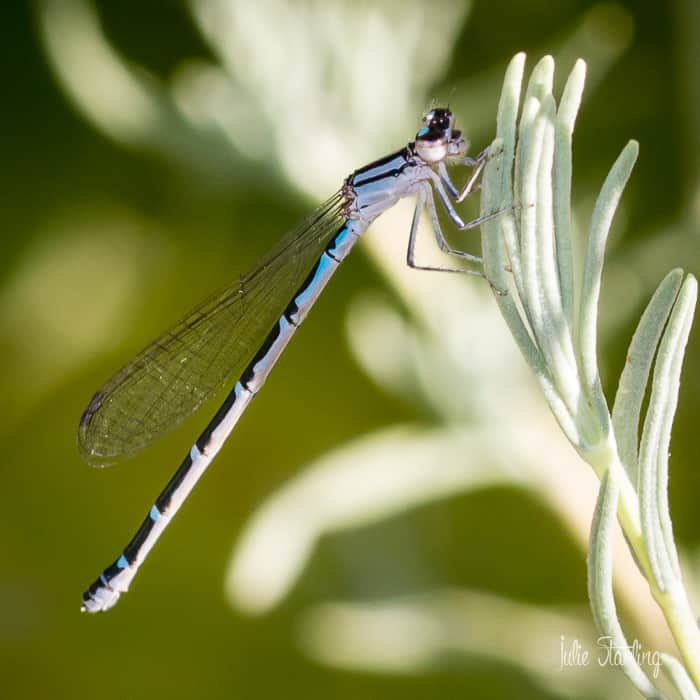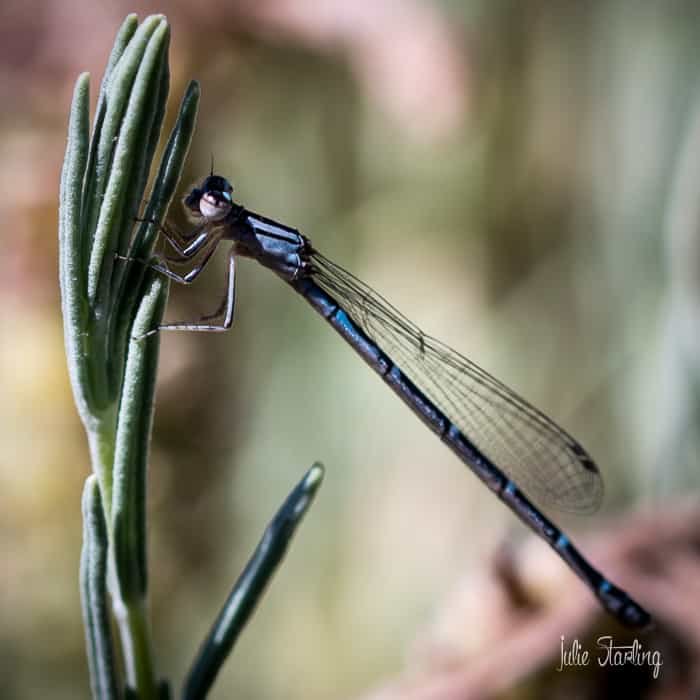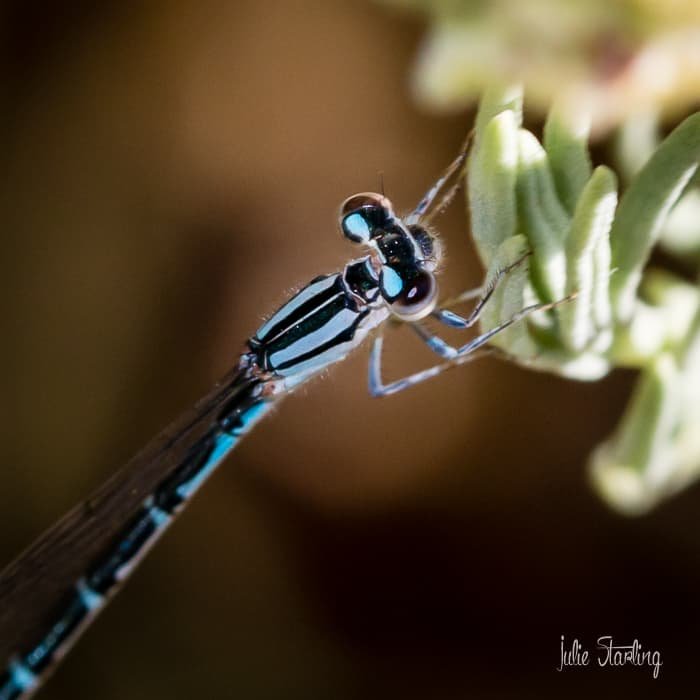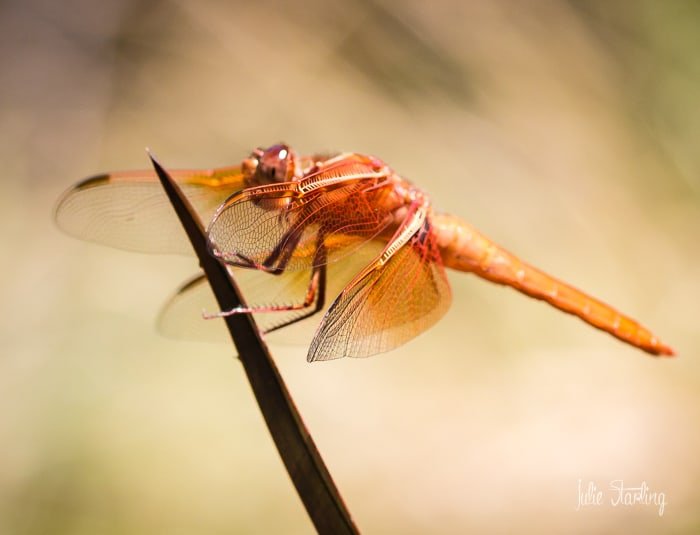If you plant it, they will come. Finally! I've been waiting to see a damselfly or dragonfly in my garden. This is a dameselfly. With all the walking I do with the dogs, I get to see them often throughout the mountains but never carry my big lens with me on a dog walk. Plus, one needs a ton of patience to get the shot. I've been watching them hunt in my garden for a few weeks now, flying over my head in repeating patterns, sometimes even buzzing my head to check me out. I'd wait 30 minutes and still no touchdown. This one happened to land just above where hundreds of newly hatched mantids were released. Sigh. I'll just pretend that this guy or gal just eats aphids, leaf hoppers, and destructive beetles. It all balances out.
The Zygoptera (damselfly) are ancient, with fossils dating back at least 250 million years ago. There are over 2000 species of the damselfly. I guessed it is one of the "dancer" species. Others on the bug guide forums I belong to say this is a bluet species. But apparently to make the correct species ID you have to look under the hood at their private parts and you know, I just didn't feel right about that without buying this one dinner first. After all, I'm not an entomologist. I just play one on the Internet.
How can something so delicate and so beautiful, be such a voracious carnivore? Nature never stops amazing me.
Here's a dragonfly on a brief touchdown on a flax plant. Dragonflies arrived around 325 million years ago so they've had millions of years to perfect their species, of which there are about 3000 world-wide. Dragonflies define the word "stealth," as they are master hunters, able to catch their prey in mid-air, often times with calculated aerial ambushes. At a 95% success rate in hunting, a dragonfly's nervous system has an almost human capacity for selective attention, able to focus on a single prey amid a cloud of fluttering insects. The hunted remains clueless until it's over. While their hunting is impressive, dragonflies also display a chilling ability to rip apart its prey. Their serrated mandibles define the name of their order "Odonata" which means "toothed ones" and leaves plenty to the imagination. But I'll elaborate anyway, because I'm certain you want to know. They catch their prey with their feet, tear off the wings with their jaws so they can't escape and scarf down the bug, all in mid-flight. Sigh. What a waste. I bet the wings would be tasty with some hot sauce. This dragonfly ( identified as a Female Flame Skimmer thanks to the awesome network of bug geeks on Social Media) had been circling my garden for most of the afternoon when she finally landed for a rest looking well-fed. "You're welcome for the variety and the buffet," I said. She didn't stay long for a better portrait but flew off in search of dessert. You don't get mad hunting skills by sitting around looking pretty.




Such amazing photos!
hello wild dingo its dennis the vizsla dog hay oooh dragons in the gardin??? that must meen that danaerys targaryen is not far beehind rite??? ok bye